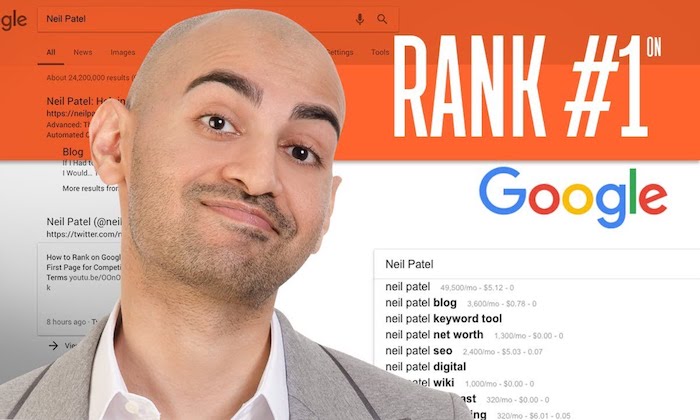
Don’t you hate how it takes forever to get results when it comes to SEO?
Everyone says it takes 6 months to a year and even in some cases many years to see results.
Well, I have some bad news and some good news for you.
Let’s start with the bad news…
SEO is a long-term strategy. It’s not about doing it for a few months and forgetting about it. And if you stop focusing on it eventually your competitors will outrank you.
And now let’s get on to the good news.
You can get results in the short run. You may not get all of the results you want right away, and you may not rank for your ideal keywords, but that doesn’t mean you can’t get results within 90, 60, and even potentially 30 days.
So how do you get results within a few months?
Well first, let’s rewire your brain so you think about SEO in the correct way.
SEO isn’t just content and links
If you want to rank number 1 on Google, what do you need?
Well, the data shows you need to write lengthy content. Because the average web page that ranks on page 1 of Google contains 1,890 words.
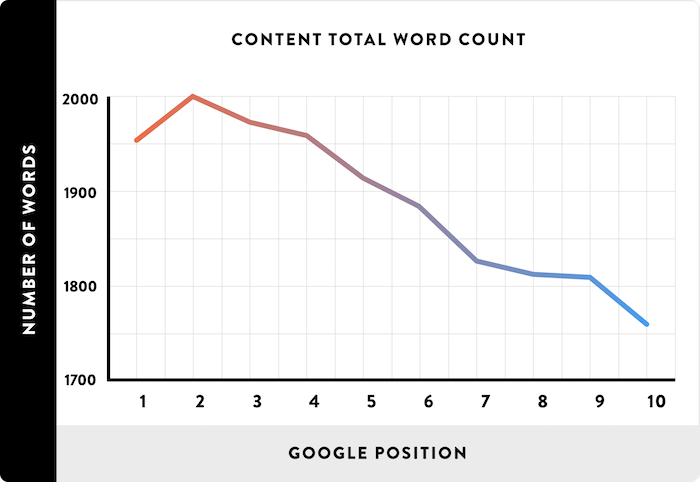
And of course, what’s content without links? Because the 2 most important factors that affect rankings according to the SEO industry are domain level links and page level links.
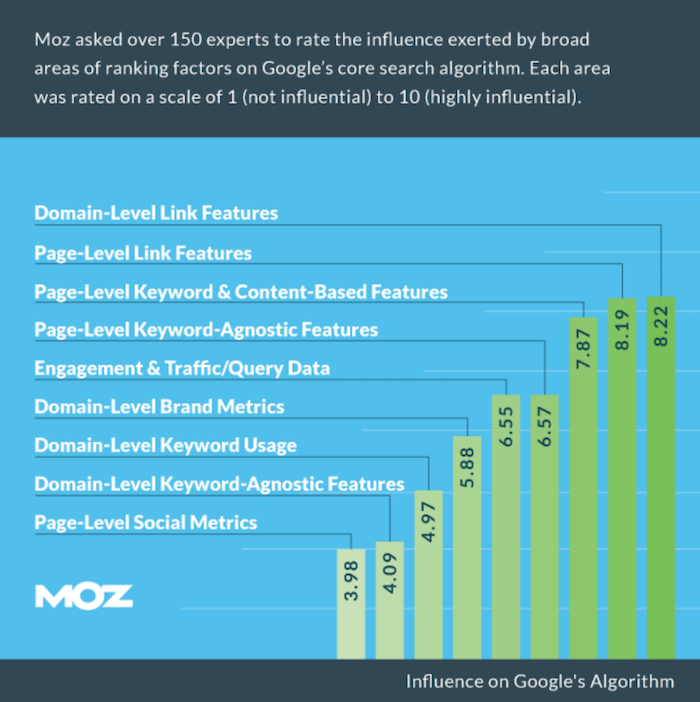
But here is the thing: SEO isn’t what it used to be. Until 2010, you used to be able to add keywords in your meta tags and you would get rankings within a few months.
And as the web got more crowded, you could then get results by doing the same old thing but you also had to build a few links. That worked really well between 2010 and 2013.
As more businesses popped up, everyone started focusing on content marketing. That was the hot thing. From 2013 to 2017, if you created tons of text-based content, got a few social shares, and picked up a few natural backlinks you could dominate Google.
But now, there are over a billion blogs if you include WordPress.com, Medium, and Tumblr.
That means Google has their choice when it comes to determining what sites to rank at the top.
In other words, just because you write lengthy content or build backlinks it doesn’t mean you are going to ranks. Millions of other sites do that as well.
And even if you got in early and your site is 10 years old, it’s no longer that easy to dominate the web.
Just look at sites like Wisegeek. They used to dominate the web as it’s a site with thousands of informative articles.
And now look at their traffic…
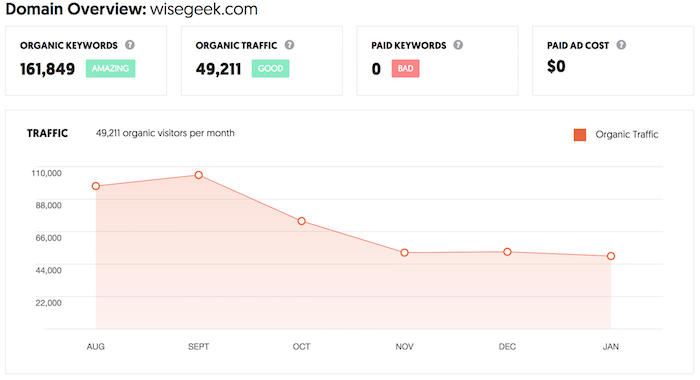
According to Ubersuggest, they get roughly 49,211 visitors a month from Google within the United States. It may seem like a lot, but their traffic is continually going down.
When I met the founder years ago it was in the millions… but not anymore.
It doesn’t even matter that the site has 8,761,524 backlinks from 74,147 referring domains.
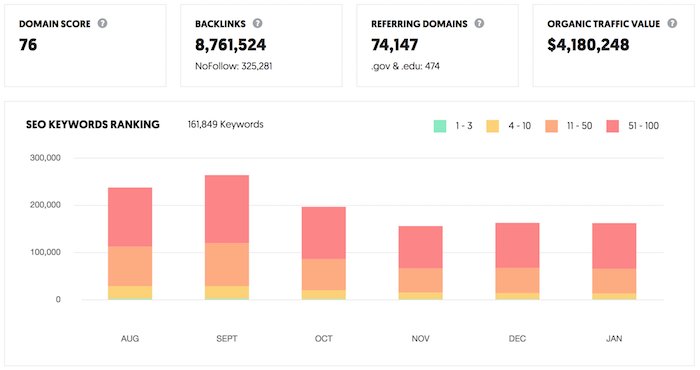
Now you may make the argument that Wisegeek doesn’t have the best content. But I have tons of examples of sites with amazing content that have the same issues.
For example, Derek Halpern from Social Triggers creates great content. Just go check out some of his blog posts if you don’t believe me.
But let’s dive into his traffic stats…
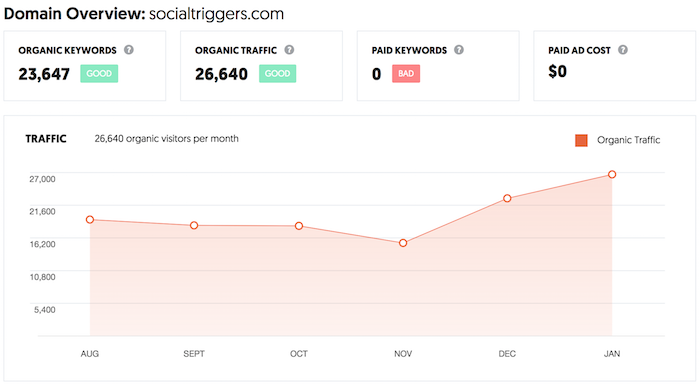
According to Ubersuggest, he gets roughly 26,640 visitors a month from Google in the United States and he has 993,790 backlinks from 5,678 referring domains.
And he ranks for some great terms. Just look at the top pages he is ranking for with terms like “how to become more confident.”
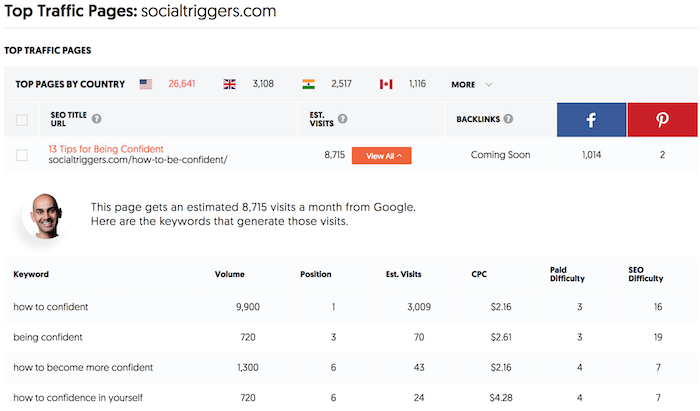
But even Social Triggers has struggled to keep their traffic over time. It’s nothing to do with Derek, he’s a smart entrepreneur, but he decided to quit and focus on his new venture Truvani, which has been doing well.
In other words, content and links don’t guarantee success.
So, what’s the best way to get rankings these days?
You have to go after low hanging fruit.
Sure, you need content, you need links, and you need to optimize for the other 198 factors Google keeps track of the optimal amount of traffic.
But it’s UNREALISTIC for you to do everything. Even if you hire an SEO agency to help you out.
And there is no way you can wait 12 months to get results from an SEO campaign.
Which means your only solution is going after the low hanging fruit.
Now I wish I could tell you the exact low hanging fruit to go after, but it varies for every site. What I can do is show some of the simple tactics that have worked for me and are easy to implement.
Strategy #1: Don’t put dates in your URL
I used to have dates in my URL because it was a default option from WordPress. I didn’t think twice about it. But the moment I removed the dates from my posts, my search traffic went up by 58%.
Best of all, it only took 30 days to get the boost in traffic. 🙂
Strategy #2: Link to the most popular posts in your sidebar
Have you noticed that I rank for terms like “online marketing” and “SEO”?
I’m currently number 2 for the term online marketing:
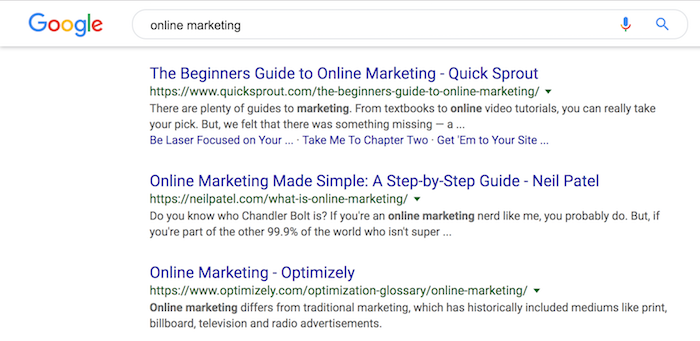
And number 5 for the term SEO:
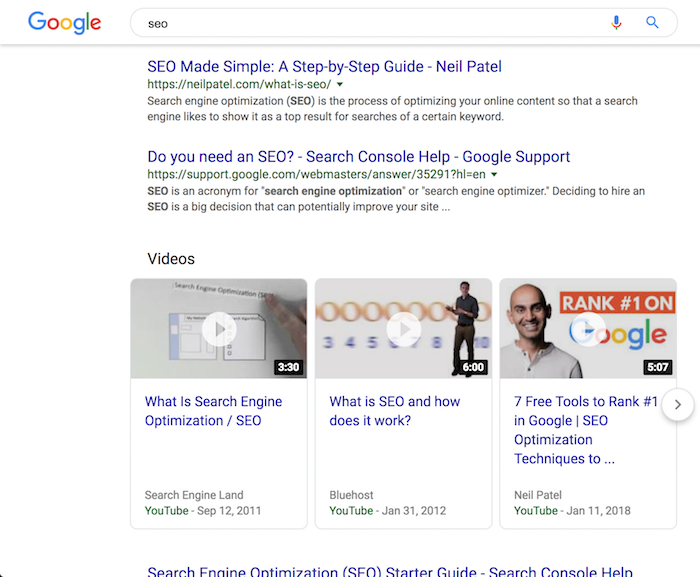
Do you want to know a hack that helped me rank higher for those terms? Well, I’ll give you a hint… you’ll find it in my sidebar.
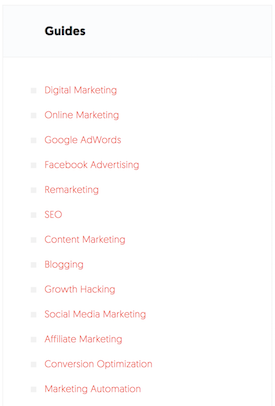
As you can see, I’ve linked to all of my major guides in my sidebar. It helps give them the juice they need so they can rank higher for terms like SEO and online marketing.
If you haven’t done this, you should consider trying it out as it will provide a quick win.
You won’t see the results in 30 days, but within a few months, you’ll notice that those pages will climb in the ranks.
Strategy #3: Land and expand
I’ve talked about this one a lot in the past, but only because it works really, really, really, well.
It’s also one of the main reasons I’ve made Ubersuggest into a robust SEO tool. Not just for you, but also because I use it for the land and expand strategy to grow my search traffic.
It’s how I get 2,105,896 visitors a month from just Google…

So, what’s this land and expand SEO strategy I use?
You need to first log into Google Search Console.
Once you are logged in, click the “performance” link and you’ll see a list of keywords you are currently ranking for.
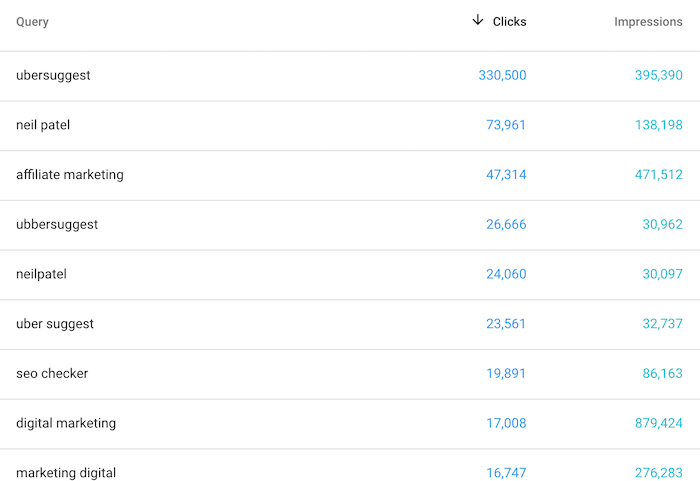
Then click on the most popular term you rank for. Make sure that keyword isn’t your brand name.
Then click on “pages.” You’ll see the page that is ranking for that keyword.
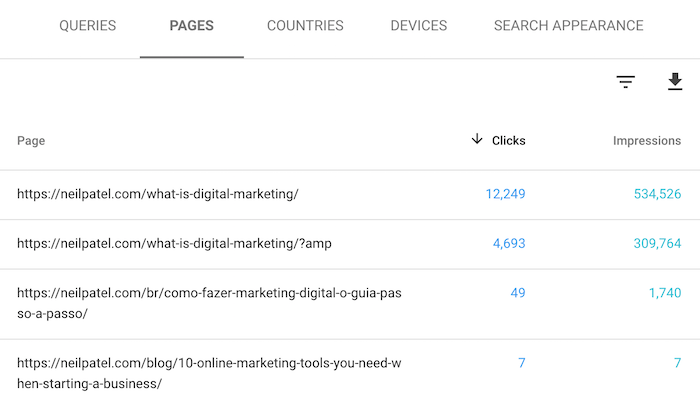
I want you to then head over to Ubersuggest and type in that keyword. Once the report loads click on “keyword ideas” in the sidebar. You’ll see a report that looks something like this:
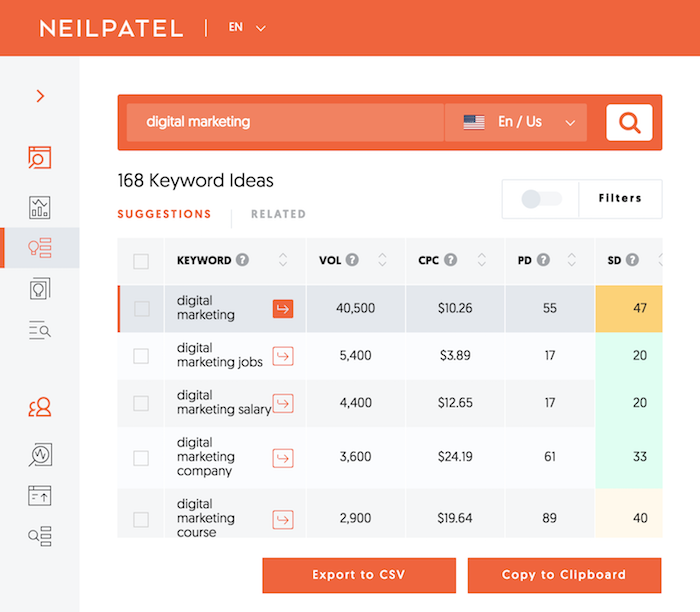
You’ll see a long list of keywords that are variations of the main keyword that you already rank for. Most of those terms are pulled from Google Suggest.
If you take the popular phrases that are related to the main term you already rank for and integrate them into that page, you’ll notice within 30 to 60 days your search traffic will shoot up.
But when leveraging this strategy you need to make sure you adjust your content. You can’t just shove in more keywords, you have to rework your content so it makes sense and it flows naturally.
The reason this SEO strategy is my favorite tactic of all time is that content marketing is a hit or miss. Just because you write content and build links, it doesn’t guarantee success. But if you expand the pages that Google already loves, there is a high chance that you’ll get more traffic.
Strategy #4: Expand internationally
In many of my companies, I generate more revenue from outside of the United States than I do within the United States.
For that reason, plus it was a piece of advice I got from a Google employee, I’ve translated my site into multiple languages.
Just look at my traffic from Brazil…
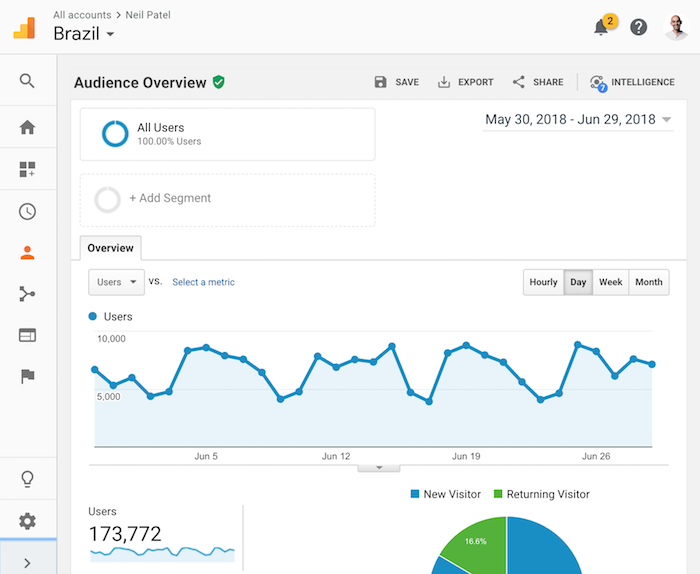
And here is my traffic from Germany…
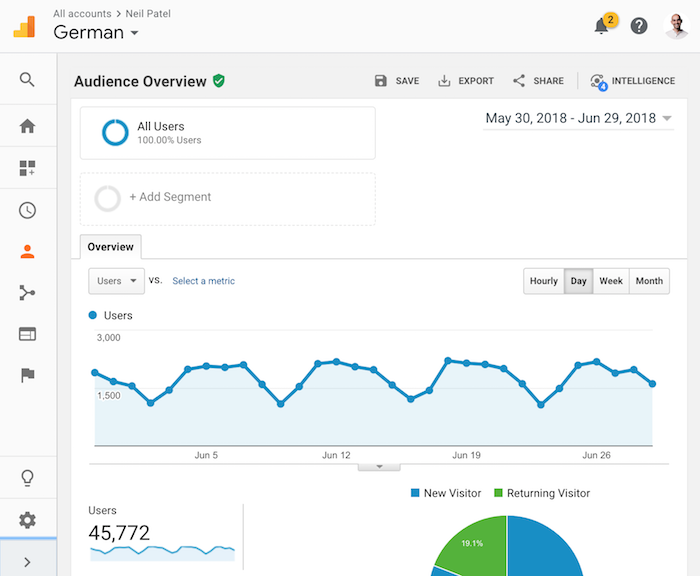
And the Spanish market…
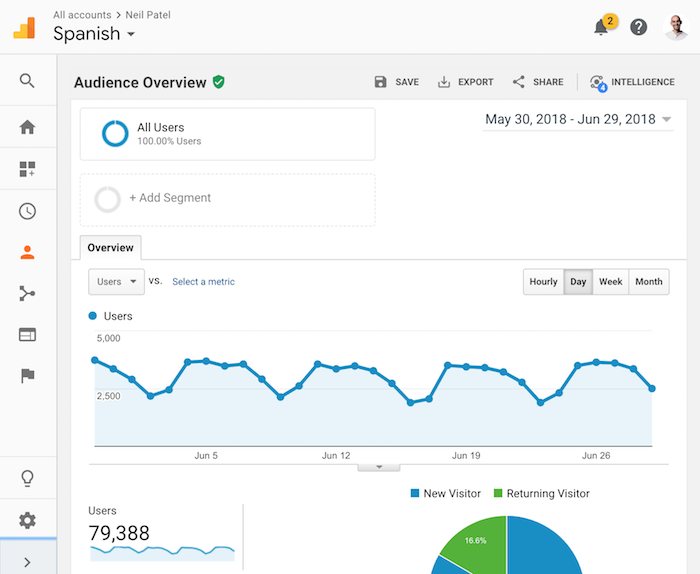
What I learned from a Google employee is that they lack content in regions where English isn’t their primary language. So if you focus on these regions, you’ll quickly notice a quick traffic boost and your conversion rate from visitor to customer within those regions should also go up.
Strategy #5: 5-minute brand hack
Google loves brands. It really is the future of SEO. In addition, brands are more defensible.
As the EX-CEO of Google said:
Brands are the solution, not the problem. Brands are how you sort out the cesspool.
In other words, if more people search for your brand name on Google, you’ll notice that your rankings will go up.
As more people typed in “Neil Patel” within Google, my traffic went from 185,980 a month:
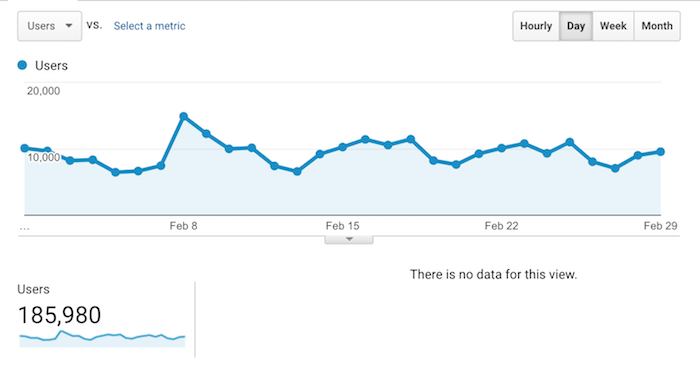
to 454,382 visitors a month:
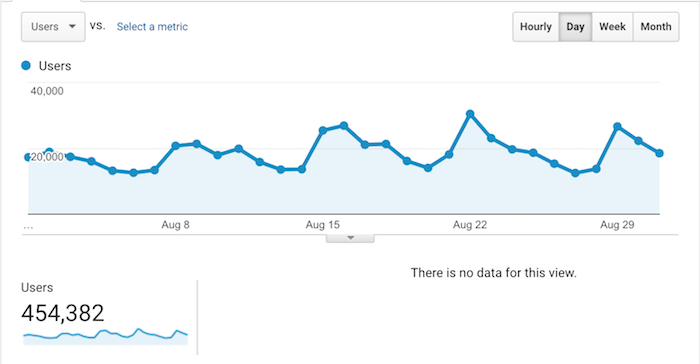
That’s a huge increase considering I saw the increase in a 6-month time frame. And even though I pulled that off back in 2016, it works even better today.
Building a brand isn’t easy and it is a long-term approach. But I am going to give you a head start… one that only takes 5 minutes.
Before I break it down, it follows the rule of 7. Someone needs to see your brand 7 times before they build up loyalty to it. In other words, if you can keep getting people to come back to your site in the short run, you’ll start building a brand and you’ll find your brand queries increase in the long run.
Now here’s a screenshot of my stats so you can see it in the works:
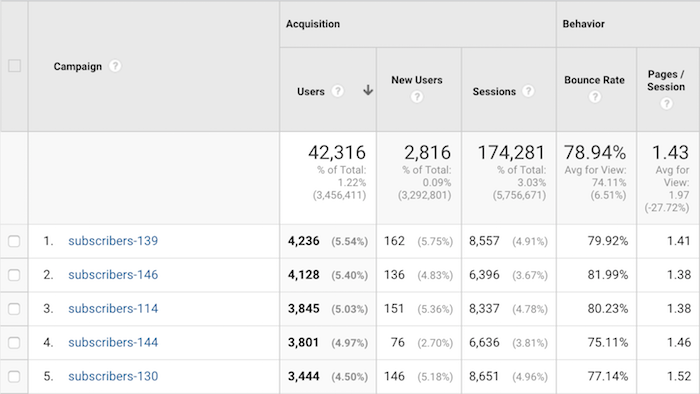
So far, I’ve gotten 42,316 people back to my site 174,281 times. That’s roughly 4 times, which means I have 3 more to go according to the rule of 7.
How did I do this?
I used a tool called Subscribers.
In which I send out a push notification every time I release a new blog post:

Plus, it allows me to generate 4,000 plus visitors for every push I send. 🙂

Strategy #6: Optimize your click-through-rate
You don’t have to write new content or build links to boost your rankings.
You can do something as simple as optimizing your click-through-rate.
Just think of it this way, if 1,000 people performed a Google search and everyone clicked on the second listing instead of the first listing, what does that tell Google?
It tells Google that the second listing should, in theory, be the first listing. And that’s what Google does… they take the listings people are clicking on and move it up to the top and move down the ones people don’t click on.
If you want step-by-step instructions to increasing your click-through-rate, follow hack #1.
It works really well and fast too. It’s how I boosted my search traffic for one of my main keywords by 1,289 visitors in 30 days.
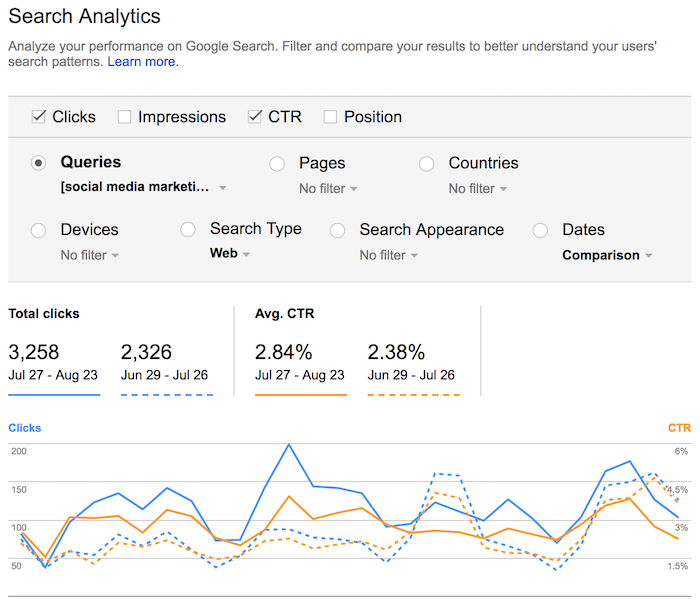
Strategy 7: Update your old content
SEO and paid ads have something in common, in which if you stop doing it your traffic goes down.
Paid ads are a bit worse in which once you stop paying your traffic goes back down to where it was.
With SEO, once you stop you’ll see a slow decline over time.
Now, this strategy is so effective that I employ a full-time person to help me out with it and this is all they do.
Remember how I talked about there being over a billion blogs on the web now?
Well, I have one full-time person updating my old content to ensure it doesn’t get out of date.
Because Google has so many options to choose from when it comes to ranking sites for any keyword out there, they are going to rank sites that are fresher.
By updating your old content, not only do you ensure that you’ll maintain your traffic, but you’ll also get more traffic.
There isn’t any real strategy to this other than to go through your old pieces of content that get traffic and make sure they are up to date.
Sometimes you won’t have to make any changes, other times you may have to change a few sentences or links, and hopefully, not too often will you have to re-write a whole article.
And every blue moon you’ll need to delete a page or a post because it is irrelevant. For example, I’ve deleted my older blog posts that discuss social networks like MySpace that no one uses.
Conclusion
Yes, SEO does take time if you think about it the same way everyone else does.
But if you think about it from a strategical perspective, you’ll find new opportunities that can provide quick results.
You may not get all of the traffic you want tomorrow but going after the low hanging fruit will give the quickest results.
If you want help finding the low hanging fruit with your SEO campaign, you can always reach out to my ad agency and someone will help out. Or you can leave a comment below.
So, are you going to stop thinking of SEO as just link building and content and start thinking of ways to get quick wins?
The post How to Think About SEO appeared first on Neil Patel.
from Blog – Neil Patel http://bit.ly/2DSDDXp

No comments:
Post a Comment